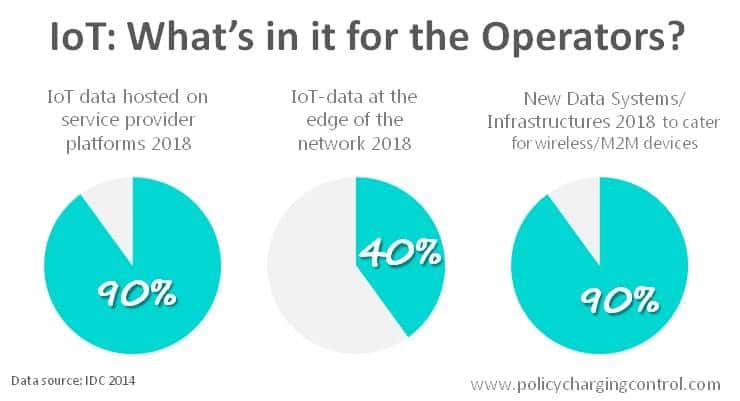Much has been said throughout 2014 about the Internet-of-Things(IoT) becoming a significant growth area for telecom operators. While M2M connectivity leverages on both wireless and fiber connectivity to power all the IoT end devices and their connectivity to the cloud, what is going to becoming a bigger business area for service providers is the cloud-based services comprising IoT platforms, data storage and computing services. All the data that IoT end devices will be collecting will ultimately be stored in huge data lakes, and because there will be huge amounts of unstructured data, providers of IoT/M2M services will require extensive big data capabilities which include the ability to process the data in real time, produce analytics, integrate the processed data to other third party clouds which will then push the data to end-user applications while at the same time, being able to ensure the privacy, security and timeliness of the data and the processes.
The IoT/M2M will open up huge opportunities for telecom operators not only because of the M2M SIMs that will be deployed across many industry verticals which are seeing great value proposition from the adoption of M2M technologies, but because the M2M connectivity has to be translated into an end service which most of the time involves providing processed data in real time onto the end-user's end-devices, regardless of time and location. The information has to be cloud-hosted and hence, service providers who are receiving all the raw data first-hand from M2M devices/nodes are well poised to offer enterprise customers and retail consumers an integrated IoT/M2M service that leverages service providers' cloud computing and big data capabilities. Third party application developers, for example, smart home application providers, will be sourcing data from various clouds depending on the number of devices and functionalities they are integrating onto a single smarthome app, and service providers who are already collating multi-device M2M data from the local markets can offer a single gateway from which multi-source data, already processed, can be pulled and delivered to end users.
According to a report by IDC, a whopping 90% of all IoT data will be hosted on service provider platforms by 2018 as cloud computing reduces the complexity of supporting IoT 'Data Blending'. IDC, a leading provider of market intelligence, in conjuction with its web conference based on its FutureScape report, said that by 2018, 40% of IoT-created data will be stored, processed, analyzed, and acted upon close to, or at the edge, of the network. IDC pointed out that by 2018, 90% of datacenter and enterprise systems management will rapidly adopt new business models to manage non-traditional infrastructure and BYOD device categories. IDC also noted that three years from now, 50% of IT networks will struggle with capacity issues due to the load created by IoT devices.
IDC says that the growth of the wearables market, the higher proportion of the population being dependent on smart devices and connectivity services as well as the widespread adoption of IoT across all sectors of the economy by 2018 will become the major drivers pushing IoT/M2M services and hence the demand for data center infrastrucure for IOT and big data and cloud service capabilities, which service providers can tap on to boost their revenues.
Vernon Turner, Senior Vice President of Research
The Internet of Things will give IT managers a lot to think about. Enterprises will have to address every IT discipline to effectively balance the deluge of data from devices that are connected to the corporate network. In addition, IoT will drive tough organizational structure changes in companies to allow innovation to be transparent to everyone, while creating new competitive business models and products.




















